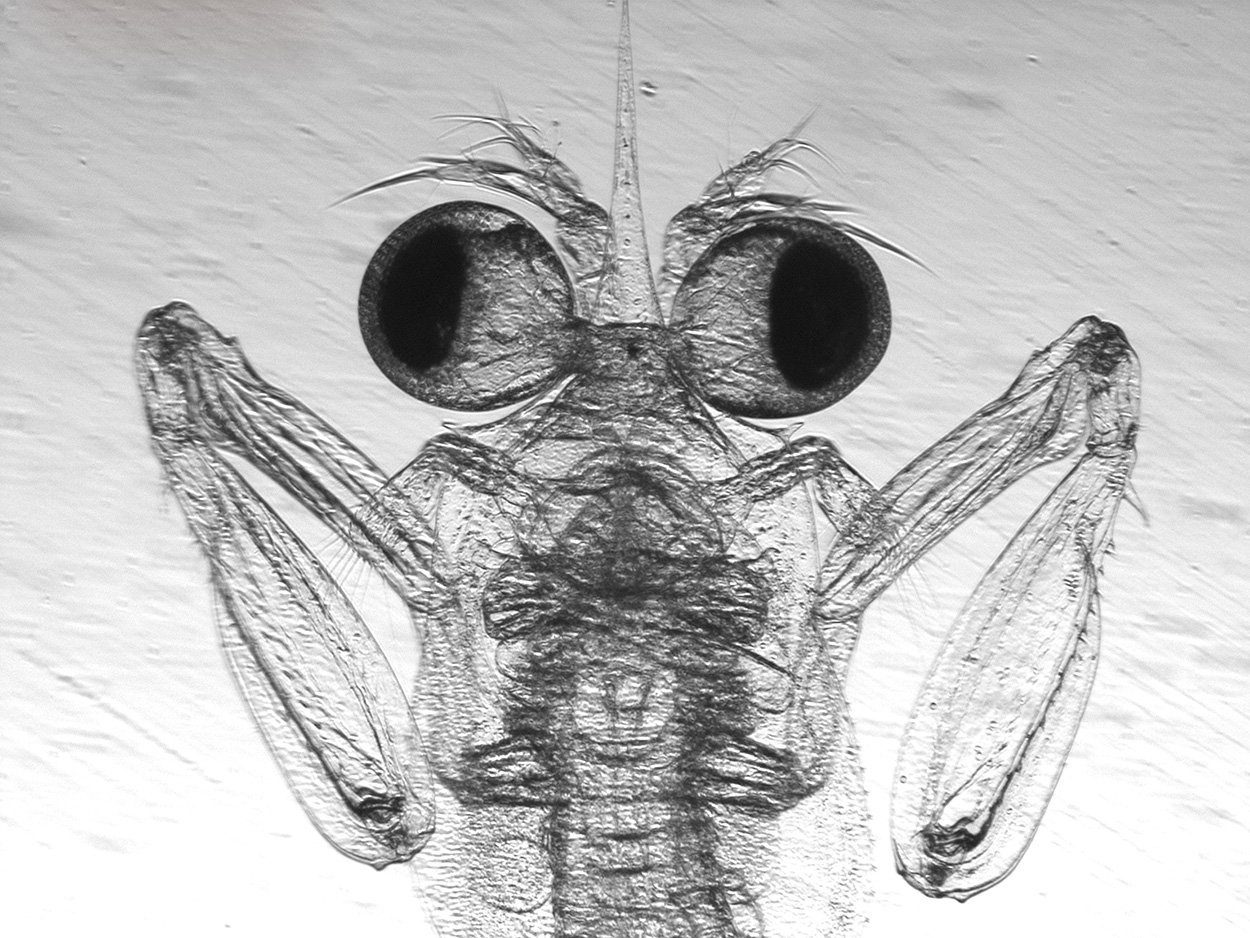
This crab larva is only two millimeters in size and is still largely transparent. But that doesn’t mean she’s defenseless: her tentacles, which are splayed to the side, can strike with enormous force.
The mantis shrimp (Gonodactylaceus falcatus) is a marine animal, but has a lot in common with an insect living on land: the praying mantis. Like them, the crab uses folded, lightning-fast fangs to hunt its prey. While the fishing insect lurking on plants grabs its prey with its fangs, the crab, which is up to 30 centimeters tall, uses its front legs much more brutally: it kills the prey with it.
The forward movement of the crab fangs develops the force of a pistol bullet and reaches speeds of up to 23 meters per second. This is around 40 times faster than the blink of an eye and makes the butterflies of these crabs one of the fastest movements in the animal kingdom.
The mantis shrimp larva shown in this photo is only a week old and around two millimeters in size. But she, too, already has the typical tentacles of her kind, they are quietly folded under her head, but can be seen here unfolded to the side. At what point these larvae start performing the typical striking maneuver, however, has so far been unclear. Researchers led by Jacob Harrison from Duke University in the USA have now investigated. To do this, they raised cancer larvae in the laboratory and regularly observed their behavior under the microscope.
It turned out that the crab larvae can strike after around nine to 15 days – around the time their yolk sac has been used up and they have to provide themselves with food. Similar to their adult conspecifics, they generate their smashing blow by tensing the muscles of their tentacles and then fixing them in the bent position by deforming their armor. If you then release this lock, the stored energy is released in one fell swoop and the tentacles snap forward.
With an average speed of 0.385 meters per second, the larvae moved their flares only slightly more slowly than the adult crabs. “They reach amazing speeds and impressive accelerations in relation to their height,” says Harrison.